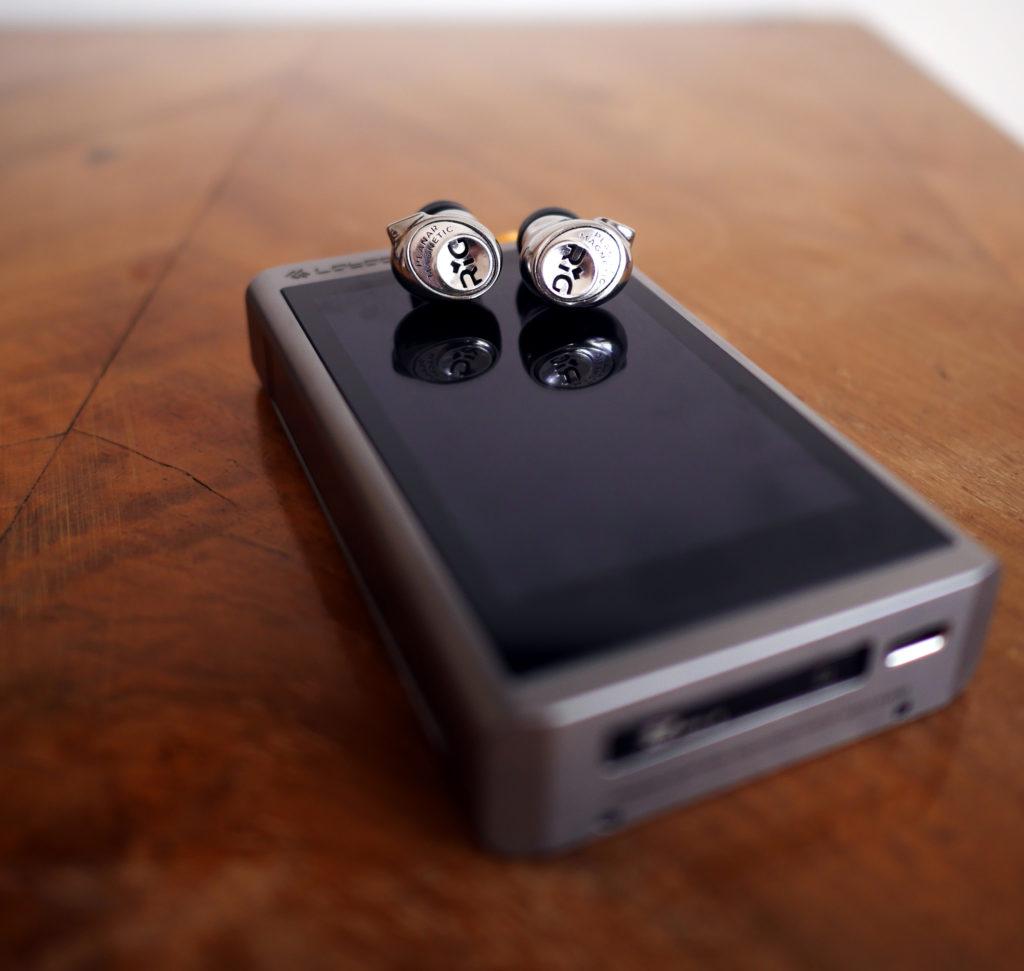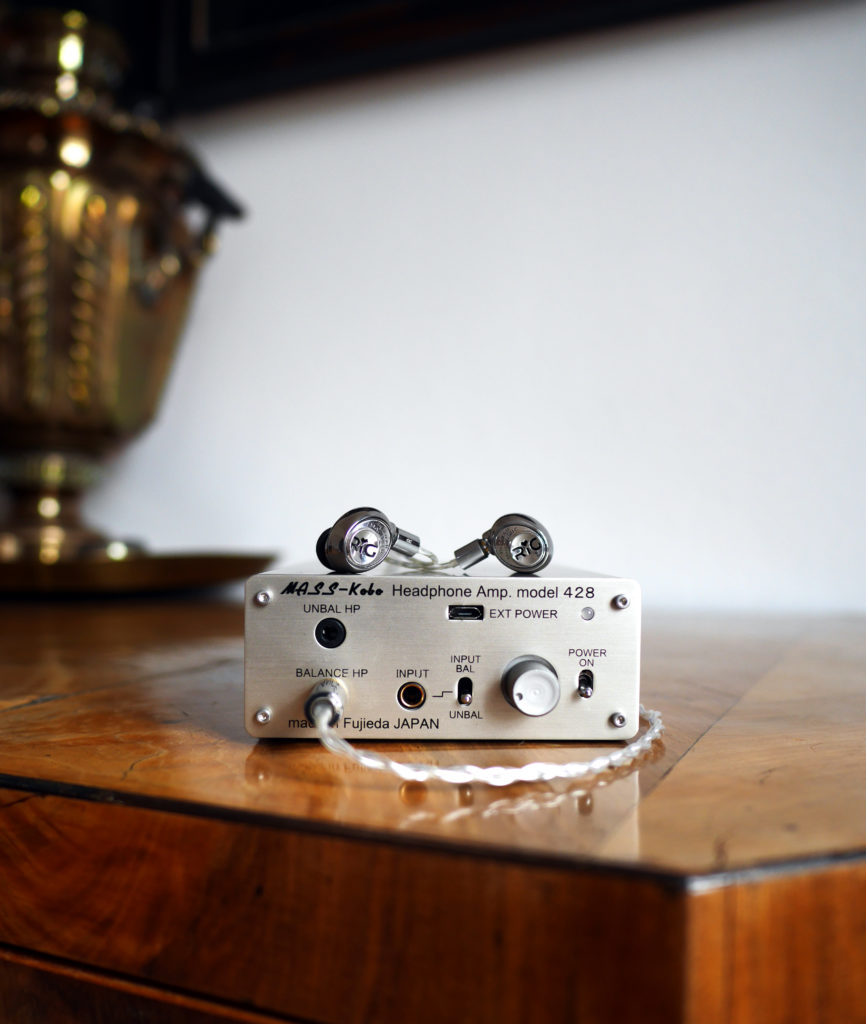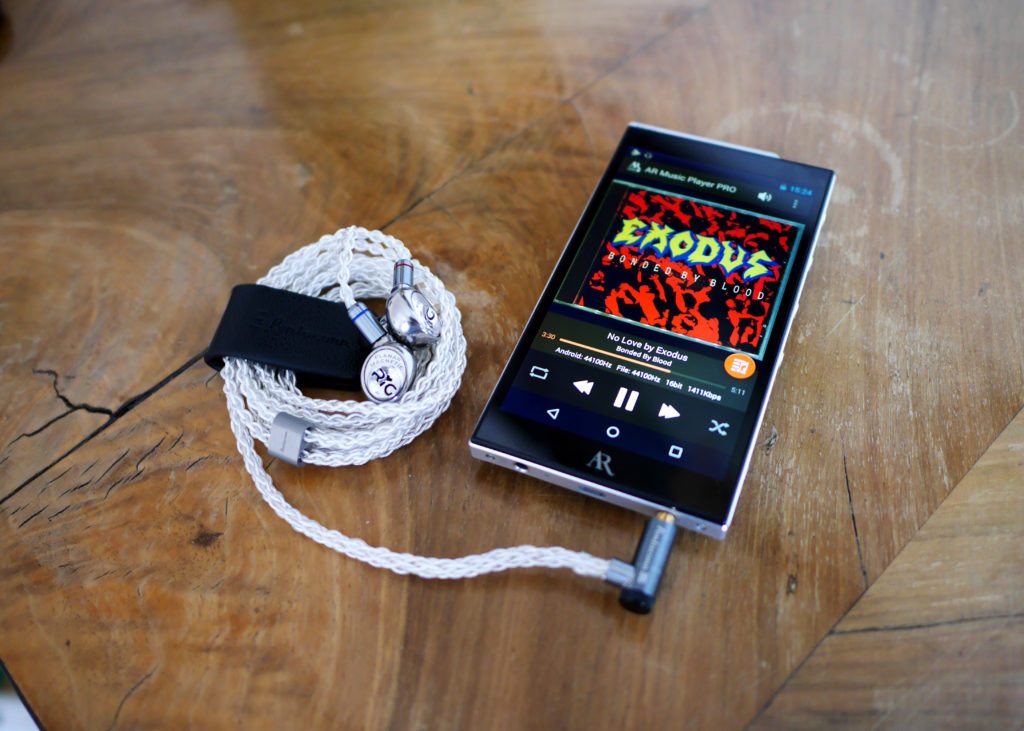![]() Introducing the RIG
Introducing the RIG
Outside of Russia, almost nothing is known of Kennerton’s planar magnetic RIG IEM; and indeed from what I gather, very little is known in Russia. As far as I’m aware, I’m also the first person outside of Russia to obtain a set. Quite the honour. What is the RIG? The RIG is Kennerton’s high-end planar magnetic IEM. In the past, they have dabbled in earbuds like the Jimo, but this is their first high-end IEM.

The RIG comes in different configurations. There is a standard acrylic version listed on their website (https://kennerton.store/product/RIG.html) and then there is a silver version, which I have the pleasure to review. In fact, I received a little more info about the particular version I have, I quote Kennerton: “Rig original has the casing made of acryl with the standard cable. Your Rig’s casing is made of silver, coated with rhodium and has titanium caps, which was made by a fairly famous local St. Petersburg jeweler who worked at Tiffany House. And the cable in your earphones is also silver.” From what I gather, the model I have will not be listed through distributors “because its crafting is complicated”; interested customers have to contact Kennerton at info@kennerton.com for orders.
Specs
- Connection type:Wired
- Mount type: Intracanal
- Acoustic design type: Closed
- Emitter: Planar magnetic
- Membrane Diameter:10 mm
- Number of Emitters:1
- Frequency response:5Hz – 61kHz
- Sensitivity:117dB /1V
- Resistance:20 ohm +/- 5%
- Cable:1.2m
- Detachable cable:Yes
- Cable braid: teflon
- Headphone jack:2pin
- Connection connector:4.4mm balanced
- Connector shape:straight
Unboxing and Build
The version I received did not come in a larger box, but only the interior case. The case is essentially a frame made from plastic and a plastic film. It’s not the most secure but if housed within the larger box, I’ve no doubt it would be secure. The RIG come with what appear to be Kennerton’s own ear tips. The cable is 2-pin silver terminating in 4.4mm and I believe is 4-wire configuration. It is free of microphonics and feels good in the hand. The build of the RIG is formidable and impressive. They feel solid in the hand and look beautiful in person. They have a good weight and are clearly very well-built. I find the comfort and fit very well, and I would say I am extremely picky about comfort and fit. No issues with these being in all day.

Sound Impressions
Out of the box, my first impressions of the RIG was that they sounded rather flat and a tad congested. Nevertheless, I had a sense that the drivers need some time to settle in, so I let them run with random music for a day or two. Returning, I was pleased to hear that the RIG had indeed expanded in sound and dynamics.
The overall sound of the RIG is clean, precise, and neutral. They have a “reference” tuning insofar as they’re fairly uncolored. They are not romantic or lush; instead, they are clear and transparent. In the same measure, they are musical in the sense of being engaging and dynamic, contingent on a good source. They are one of the few IEMs that I’ve heard, which adapt to the source/music without any distinct coloration.
The bass is taut, well-controlled, and well-extended. My test track for bass is “The Demon Dance” from The Neon Demon OST. On the RIG, the track reaches when it needs to and presents a textured, highly detailed, and nimble delivery. Clarity is everything here. There’s zero muddiness. Are the RIG bass cannons? No, far from it. These are refined, mature, and incisive.

The same is true of the mids: on the RIG, they’re presented in a linear, clean, and precise way. There’s no congestion; only clarity. Fleetwood Mac’s Rumors is presented in all its layered glory, with nothing hidden and everything revealed. Male vocals have body though are not foregrounded; female vocals are airy and intimate. The top end of the RIG is smooth and airy with minimal fatigue. This is especially clear on orchestral work; the timbre of violins has a vivid sense of realism, which proves engaging.
Genre Suitability and Technical Performance
My sense is that if you listen to a lot of classical, fusion, jazz, progressive rock, and soundtracks, then you will get a lot from the RIG. For metal, rock, and EDM, they remain faithful to the music but they’re not optimal for these genres. Of the Kennerton headphones I’ve tried, the RIG most resemble the Thror with the accent on transparency, clarity, and resolution. In terms of isolation, I would see the RIG more for home use. Isolation is adequate but I would not recommend these being used for travel use.
Technically, the RIG are impressive. Imaging is precise and accurate with a pinpoint sense of placement. Detail retrieval is incisive and revealing. Micro details are especially impressive. Dynamics are present but will depend radically on the source used.

Driving the RIG
The RIG needs power. Lots of it. You don’t even want to think about entry-level DAPs, and you can totally forget about dongles much less any kind of phone. You need a beefy DAP with a lot of output. Some examples: Mojo 2 works well; Hugo 2 excels; the class-A powered Acoustic Research AR-M2 works well; the 750mW loaded Lotoo Paw Gold Touch Titanium works exceptionally well. I’ve no doubt any of the “MAX” DAPs would also work well.

Portable amps are your friend. I myself found Mass Kobo 428 and Lotoo Paw Gold Touch Titanium a stunning pairing. Cayin’s C9 might be another alternative. I did not find Cayin’s N7 to be sufficiently powerful, however, and I would stay clear of anything with less power than the N7. Finally, I’m not a great believer in balanced for the sake of it, but I did find that the RIG seemed to benefit from being run from a balanced source in terms of overall cohesion and dynamics.
Some Tips
The RIG are sensitive to every part of the chain, not least tips. I went through a fair share. The stock tips are somewhat reminiscent of JVC Spiral Dots, and have a spacious and clear sound. Of the tips I tried, my recommendation would be the new Coreir tips from Pentaconn or JVC Spiral Dots themselves. The Coreir tips have brass in them, and they generate more bottom end and a bit more body overall. They sound very good with the RIG. I preferred the Spiral Dots as they offer a more intimate presentation, which feels slightly more cohesive to me. I would highly recommend some experimenting.
Cable Rolling

Always a sensitive topic, but necessary with the RIG. The stock cable is very good, but cable exploration is worth pursuing given the transparency of these IEMs. I tried two 3rd party cables; the Signum cable from Arctic Cables and the Lilium cable from Pentaconn. Both cables are pure silver, but the Signum is 4 cores whereas the Lilium is 8 cores, thus chunky.
Stock: Tonally, the sound of the stock cable is excellent. I hear a great balance with good extension in the sub-bass and a lot of air in the upper mids. Having not used it for some time, I’m actually pleasantly surprised by how good it sounds. However, the staging is rather intimate and it doesn’t quite have the black background one tends to find on higher tier cables.
Lilium: Despite being 8 cores and much thicker than the stock cable, the Lilium is comfortable, though you will feel the pressure around the ear more than the other cables. Technically, it’s a marvel with excellent imaging and detail retrieval. Tonally, it’s not quite as rich as the stock cable and therefore might be fatiguing for some listeners depending on the source used.
Signum: The Signum combines the best aspects of the other cables; it retains the slightly rich tonality of the stock cable but improves on the technical aspects in every respect. As with all Arctic Cables cables, what is notable is the holographic staging, which generates a more immersive presentation. Comfort here is also very good; the cable is light but also durable.

Comparisons
Vs. Sennheiser IE900: These are in a way the anthesis of the IE900. Whereas the IE900 are basically “fun” and slightly V-shaped, the RIG are sophisticated and balanced. If you’re looking for an IEM to accompany a “fun” set, then the RIG would be a good choice.
Vs. Final Audio A8000: The RIG runs close to the A8000 in terms of technical performance. Both are very transparent with a linear profile. The RIG are a step-up in terms of reaching deeper in the lower mids and offering a more precise presentation; but in terms of being easy to drive, they fall behind the Final’s.
Conclusion
The RIG is an enigma which merits your attention. Likely to fly under the radar given it’s essentially made to order, the RIG nevertheless offers a TOTL performance with a unique level of technical incision and musical richness. Especially with classical, jazz, fusion and other “audiophile” oriented genres, the RIG excel and offer breathtaking clarity and resolution. For genres that rely on visceral impact, the RIG may not be the IEM to go for. But if you have a DAP/amp powerful enough to drive them, then the RIG is sure to impress.![]()

